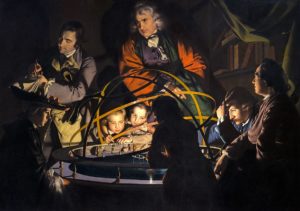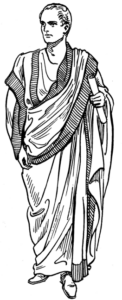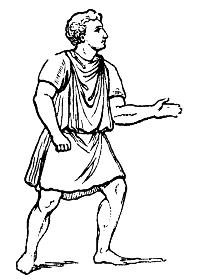 The agricultural areas surrounding Roman cities were worked carefully and intelligently. Plants, especially fruits, were brought in from all over the world and were carefully grafted onto other plants. In addition to grains, olives, grapes and legumes (beans, peas, etc.) there were onions, garlic, cucumbers, asparagus, lettuce, cabbage and so on. Romans also grew a wide variety of other fruits and herbs, such as apricots, peaches, plums, figs, mulberry, dill, parsley, cumin and others.
The agricultural areas surrounding Roman cities were worked carefully and intelligently. Plants, especially fruits, were brought in from all over the world and were carefully grafted onto other plants. In addition to grains, olives, grapes and legumes (beans, peas, etc.) there were onions, garlic, cucumbers, asparagus, lettuce, cabbage and so on. Romans also grew a wide variety of other fruits and herbs, such as apricots, peaches, plums, figs, mulberry, dill, parsley, cumin and others.
Roman farmers used harvesting machines, rotated their crops, carefully matched the crop to the soil and terraced their land on the sides of hills.
Cows provided milk to the Romans for drinking, while the milk of sheep and goats was used for making cheese.
Women in Rome were treated better than in Greece. There were women who owned property, who worked as doctors and lawyers, and so on. Still, they were generally expected to play certain assigned roles. But again, the relationships between women and men, inside the home, tended to be independent of laws, and as always, husbands and wives were often deeply fond of one another.
Here, for example, is the text of a small monument that a Roman man put up for his recently deceased wife:
You were beautiful beyond measure, Statilia, and true to your husbands. He who came first, had he been able to withstand the fates, would have set up this stone to you; while I, alas, who have been blessed by your pure heart these sixteen years, now have lost you.
Roman clothing wasn’t too different from the dress of the Greeks. Romans preferred togas of various types (shown on the left, below) sometimes with stripes to designate one’s rank. Indoors, or when doing physical work, men often wore a tunic; a type of shirt (shown on the right, below).


Roman children, both boys and girls, were educated in their homes (often by tutors) or at small, private schools. The rich tended to hire Greek tutors. Children advanced through several levels of education, usually into their teenage years. They learned to read and write, when older to speak in public, and basic mathematics. They also learned enough geometry to be useful for engineering and building.
Romans began telling time simply by reference to the sun, but soon enough added sundials, and by 158 BC they were using water clocks.
Romans were not much interested in charity, though they often provided free medical care for the poor. The groups that handled personal needs, particularly burial expenses and some medical care were trade guilds.
The Roman trade guilds didn’t deal with wage levels, as modern unions do, but were social clubs that provided members with proper burials, with legal representation, and even with insurance. And there were a great number of guilds, from the earliest days until the latter times. There were religious guilds, military guilds, and guilds for metalworkers, weavers, tanners, builders, cooks, rope-makers, many types of musicians and actors, shoemakers, dyers, carpenters, and so on, at length. The Roman government, always suspicious of private groups, had to tolerate the guilds, grudgingly calling them “necessary for Roman society.”
Trade wasn’t particularly well-liked by the upper classes. Senators, more or less the highest class, were directed to large scale farming, while equestrians, just below them, tended toward more commercial endeavors, such as mining, but mainly into tax farming. That is, by collecting taxes however they may (often openly stealing under cover of law), giving the necessary part to the treasury and keeping the rest for themselves.
Taxation, after all, involves more money than any consensual business. And so for the money-obsessed classes of Rome, it made sense. The Romans were, as we noted earlier, very, very practical.
END
Lesson Plan:
Again, go slowly and be sure that each student grasps the material well. Fill the gaps as you go, and don’t delay doing so. I included a few more advanced words in this lesson – words like hierarchical and grudgingly. Please be sure that no child gets lost on them, and consider turning them into exercises for finding words in a dictionary.
There are a large number of intriguing side paths that can arise from this discussion. Picking the best ones to follow will be difficult, but do try to follow at least a few. And let the students do the research on these side paths; you can oversee and guide, but let them do the work themselves: they need to know that they are able.
Below I’ll include several sections from the Twelves Tables discussed above, and I’ll post the whole document to the FMP members section. These laws (while sometimes ugly) are useful to really grasp the character of the Roman people and their system.
The Will Durant quotes in this lesson are from his book Caesar and Christ.
Check out our back issues. I promise you they are unique.
